I’ve been thinking about doing this post for a while. I had a lot of questions about how pregnancy and childbirth work in Denmark before I got pregnant, questions that just weren’t addressed by general websites like angloinfo.com and expatindenmark.com. So I thought I’d put together a post on what I went through and learned, just in case anyone else out there stumbles across this and could find the information useful. This post will take you through everything I know up until now, which is about a week before the birth. I’ll do a post on the birth and post-birth stuff as soon as that happens (eek!) and I’m able to gather my wits and time together enough to actually write the post.
I guess I should start with the biggest difference between the US and Denmark (though this won’t be so shocking to people from other EU countries who, I believe, mostly follow a similar system to Denmark). Here you have midwives instead of an OBGYN. For all prenatal checkups, you’ll see either your normal doctor or a midwife (usually the same midwife for every appointment), and for the birth you will have the assistance of a midwife with surgeons and pediatricians in the hospital and on call in case there are complications.
The second biggest difference for someone coming from the US: the lack of choice. In the US, birth is all about choosing your doctor, choosing the hospital you’ll give birth at, choosing your pediatrician, choosing your prenatal classes, etc. etc. In Denmark, you give birth at the hospital that serves your kommune. For me in Aarhus, that’s Skejby Sugehus. You will work with the team of midwives there. One will probably be assigned to you for your prenatal visits. When you arrive at the hospital to give birth, you will be assigned a midwife who’s on duty to look after you. You really won’t choose much of anything.
It’s amazing how much stress this takes out of the whole process. Even for someone who can be a bit of a control/planning freak like me, not having to make all those decisions, allowing myself to trust in the system, has really been freeing. Some people struggle with this, though, especially if you come from the US where trusting the medical system is a bit of a foreign concept, so it’s good to know up front.
And, as always in Denmark, it’s important for you to speak up if you have any questions or concerns. In general, advice and information is not volunteered. You have to seek it out. Danes think it’s rude to assume that you need help and that it’s intrusive to just give you their opinion, even doctors. So if you have a question, ask it.
Now for some specifics:
Doctor’s Visits:
- Once you pee on that little stick and see that little sign indicating that, yay!, you’re pregnant,
you won’t actually see the doctor until you are 7-8 weeks along. (P.S. For those of you totally new to this whole pregnancy thing, you start counting from the start of your last period, so 8 weeks will probably come sooner than you think.) This was a huge surprise to me. I thought you had to go to the doctor right away to confirm pregnancy, but nope! Also, on your first visit, they may not even do a test to confirm that you are, indeed, pregnant. At least they didn’t for me. They didn’t even ask to see the pregnancy test. They just totally, 100% took my word for it. Also weird.
- You probably won’t see the doctor as much as you expect, especially if you’re coming from the US. As long as you have a normal pregnancy, there’s never a point at which you see the doctor weekly, even as you approach or pass your due date. My doctor gave me this schedule:
- Week 9-10: blood test
- Week 12-13: first ultrasound
- Week 18-20: first visit with midwives, also the second ultrasound
- Week 25: check-up with primary doctor
- Week 27-29: second visit with midwives
- Week 32: check-up with primary doctor
- Week 34-36: third visit with midwives
- Week 40: final visit with midwives
- And what happens at all these doctors’ and midwives’ visits is pretty basic. You get weighed, your stomach is measured, your blood pressure is taken, a urine sample is tested, they listen to the baby’s heartbeat. That’s about it. You can bring up any issues that you have, but the doctors won’t be asking much of you. (The first meeting with the midwives is almost laughably short. They literally sit you down and ask you a few questions – like have you been around pigs lately – and then send you on your way.)
- Oh, one other strange thing to be aware of: after your first appointment the midwives will ask you to bring along with you a vial of your own urine to test while you’re there (instead of just giving you a cup to pee in when you arrive). Apparently it’s a cost saving measure? You can buy these for 10 kr at Matas or any pharmacy.
- Also, your doctor will give you an envelope including a couple of forms that you’ll carry to every appointment. It’s called your vandrejournal. DO NOT LOSE THIS PAPERWORK! Each appointment, your doctor or midwife or ultrasound tech will update it, and I’m not entirely sure that the information can be reconstructed if you lose it.
- Week 18-20: the second ultrasound. This is the one where you can find out the sex of your baby and where they test for certain chromosomal disorders like Down Syndrome. This will also be your last ultrasound unless something goes wrong. You can pay to do a private 3D ultrasound if you want one of those, but you won’t get one through the normal process.
- Week 25: the dreaded blood sugar test. You should only have to do this if you have a history of diabetes in your family, the doctors determine that you’re overweight (not sure what that threshold is in Denmark where most people are quite fit), or if they find sugar in your urine tests. I had to do it because a few of my grandparents developed diabetes later in life. It’s an annoying, icky test. You’re supposed to fast – from food AND water – from 10pm the night before. You show up at the hospital at 8am with a group of other pregnant women. They give you each a small glass of liquid sugar, which you have to gulp down. Then you sit in the waiting room for 2 hours while your body processes that sugar, feeling all weird and jittery, high on pure sugar because you haven’t eaten in 12 hours. Then they draw some blood and send you home. Some people really crash after the test. Some people can’t keep the syrup down. I thought it was gross to swallow and strange to feel the sugar rush, but all in all it wasn’t too terrible. It just took up a lot of time. Hopefully, you’ll be one of the lucky ones that gets to skip it.
Pregnancy Classes:
- So I was really interested in the availability of prenatal/birthing classes. And there’s some good news and some bad news. The good news is that if you’re planning on doing the birth through Skejby and their affiliated midwives, they do offer some prenatal classes in English. Yay! The bad news is that these are just basic what-to-expect-from-the-birth classes. They’re not going to include birthing techniques like Lamaze or whatever.
- That being said, they are very useful both if you’re a first time parent and if you’re giving birth for the first time in Denmark. It’s 4 modules of 2 hours each, and they cover what happens during the birth, what you can expect as far as pain management options, a tour of the hospital birthing rooms, and even a bit on breast feeding the first few weeks. Also, many international moms have told me that they started a really supportive mothers’ group with the moms at their class, so that’s a great added benefit.
- There are also some pregnancy/prenatal classes – including exercise classes – offered through FOF Aarhus, which, if you’re not familiar with it, is kind of like a continuing education, community college type organization. The problem: these classes are usually taught in Danish. Sometimes you can contact the teacher and ask if they can also explain in English. It’s up to you and your comfort level. We didn’t go to any of these because I wasn’t comfortable enough with Danish to do it in Danish and didn’t think I’d get enough out of it with the teacher just occasionally translating into English. Some people found them really useful, though, especially if they brought their Danish husband along.
Dulas:
- We were sort of interested in exploring the option of having a dula for the birth since we’re so new to the system. However, in the end we decided against it. There are a few dulas in Denmark – you can usually find them just by doing a google search – but they don’t seem to be as prevalent as in the US. Perhaps because they’re not as needed here since you have midwives to guide you through the process. Also, the ones we looked at were craaaazy expensive.
Mothers’ Groups:
- If you were Danish, your midwife would set you up with a group of other women at the same point in there pregnancies as you are. I’ve heard that some midwives will do so even if you aren’t Danish as long as you speak Danish well enough. It’s possible some midwives will try to get you into an English speaking group, but I think that’s pretty rare. This might also happen after the birth. If you’re interested, just be vocal and ask about it.
- If you’re in Aarhus, you should definitely check out the Facebook group International Mothers in Aarhus. They’re really active and really helpful and meet up all the time.
Shopping for Baby Stuff:
- Depending on your circumstances, this will either be a joy or a chore. We live in the city center and don’t have a car, so for us it turned into a bit of a chore. Most of the Danish baby stores are a bit outside the city center, and clearly it would be nice to have a car to carry the big stuff home.
- If you’re shopping in Denmark, the big stores you’ll want to hit are: BabySam, Ønskebørn, and IKEA (the latter mostly for cheap furniture).
- If you’re shopping online, you can try Amazon UK, though I found their selection really, really lacking. A friend turned me on to mothercare.com for cheap-ish baby stuff from the UK. There’s also Boots.com, which has an international page, for more beauty and health care related products (your creams, your lotions) which usually Amazon.co.uk can’t deliver internationally.
- We did kind of a combination of things. Some stuff is nice to just buy here in Denmark because you know you can get replacement parts or whatever. Also, it’s sooo much nicer to shop in person, so we made a couple trips to various Babysams and Ønskebørns to do some window shopping. But we bought a lot of the big stuff – like the stroller and crib – online because even with the international shipping it was still cheaper.
- To pram or not to pram: One of the things you’ll have to decide as an international in Denmark who’s having a baby is whether or not you are going to buy one of those giant Danish prams. I’ve written about them before. You don’t hear about this a lot in the US, but it seems to be taken as common knowledge in Europe that babies should lie flat (i.e. not in a carseat) until they’re about 6 months old. Hence the prevalence of prams here. They’re so big because Danish parents use them to allow their children to nap outside (bundled up, of course) until they’re about 3 years old. Also, those air tires and built in shocks are great over cobblestone streets. However, they’re are HUGE, heavy, require their own parking space, and not easy to turn or get into small shops.
The choice is yours. Just know that if you want a non-barnevogn, it will be more difficult to find and you’ll probably have to buy it online. The convertible strollers that are available in store in Denmark tend to be just as expensive as the big prams, so expect to shell out a lot for this item. (Just so you know, we went with a combination stroller from the UK that has a smaller pram bed which can be switched out with a normal stroller seat at 6 months.)
That’s the scoop on the prenatal process in Denmark, or at least in Aarhus, Denmark. Stay tuned for posts on what we’ve been told to expect from the actual birth at Skejby and also on naming your baby in Denmark.
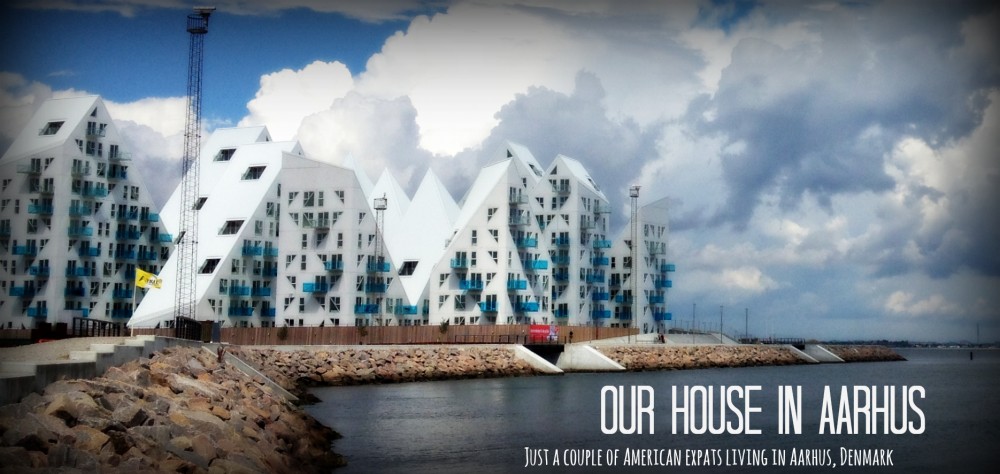
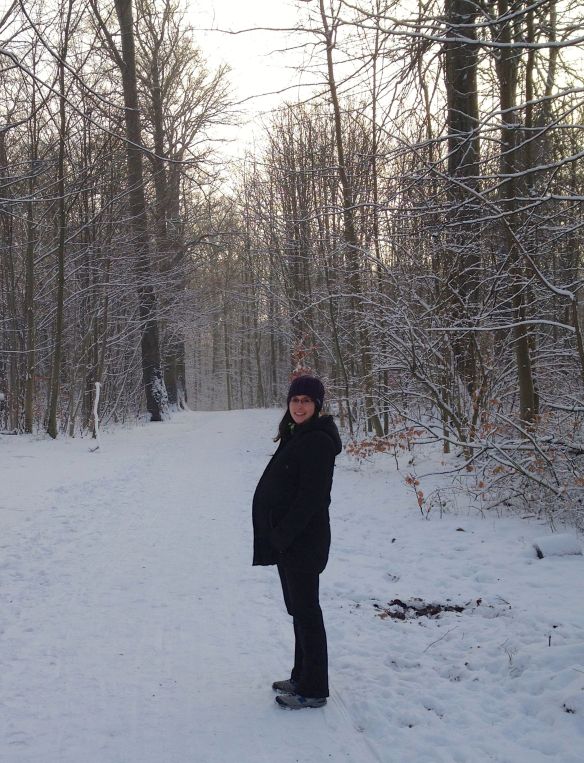

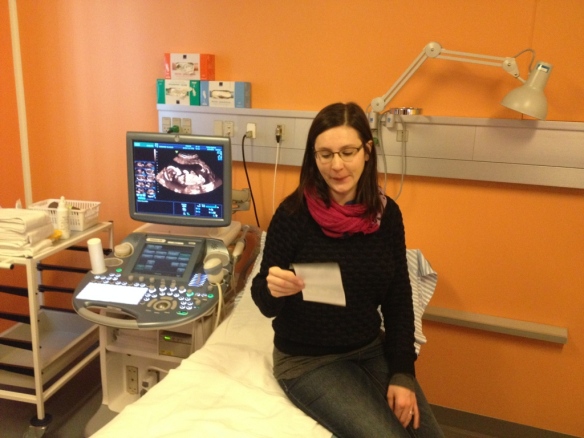
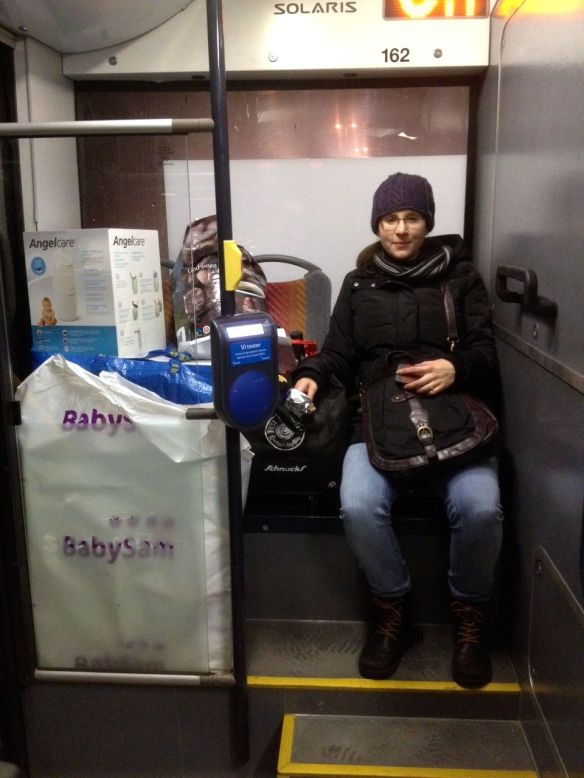
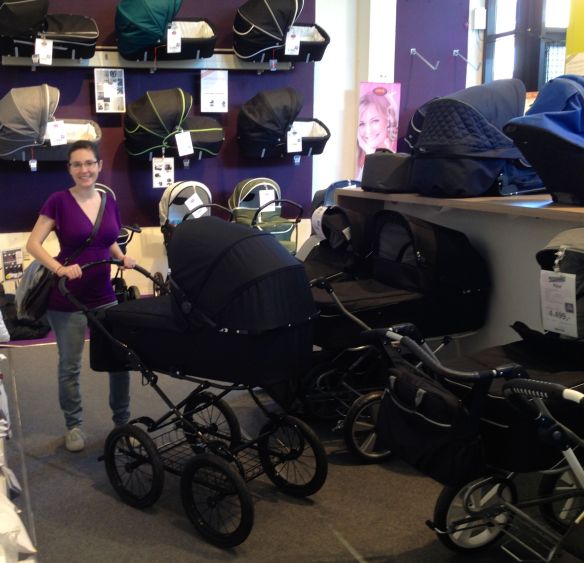
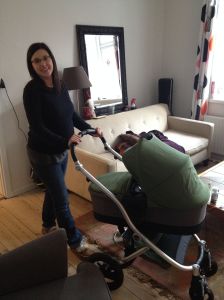
I’m so glad that you posted this. I just moved from Los Angeles to Aarhus area in December with my husband who’s a Dane. I’ll be 33 this year, so the proverbial clock is ticking and we are planning to have our kids while we are here. Not pregnant yet, but it’s great to get an inside view from an American’s perspective.
I also own a newborn photography business http://bebefaces.com. In L.A., I would form marketing partnerships with doulas, but since using doulas isn’t common here, then I’ll skip that. In the states birthing centers are open to letting photographers display newborn images on canvas as artwork for their walls, which is a great marketing tool. I wonder if the reception to that will be warm in Denmark also.
We’ll see. Wish me luck!
LikeLiked by 1 person
I’m glad that you found this information helpful! I was hoping it would be useful since I found myself in a similar position to you – thinking we’d have our first here but not really knowing anything about the system – and wished that I could find a bit more information for that very specific situation.
Good luck with establishing your business here! You could always try and get your name out in the international community, as moms there are quite often looking for English speaking photographers. I’m not sure if newborn photography is a thing in Denmark or not. I don’t know enough Danish moms to know. But I know many international mothers would know what it is and are probably looking for photographers. (Especially since a lot of time those kinds of things seem to be easy to find in Copenhagen but harder to locate here in Aarhus.)
LikeLike
Good to have you back 🙂
I’m not at all in the target group for this post, since I’m no expat and not having any more children – but I enjoyed it anyway. It’s interesting to read you observations about the differences, and it seems that you are comfortable with the way things are here, even if they are different.
Just a note on Skejby: you will be in the best or second-best hospital in Denmark (Rigshospitalet in Copenhagen probably being no. 1), so you and your baby will be in the best hands. I had my daughter there, and knowing this was one of the best hospitals somehow made me feel a bit more safe.
FOF Aarhus does offer individual sessions on childbirth – or at least they did in 2006… As I recall it, it wasn’t that expensive. My husband did not feel like sharing all of his thoughts and questions with a group of people, so we went for an individual session. I would think it should be possible to find someone who could speak English for such a session, if relevant.
And I know you’re not asking for any advice, but I’ll give it to you anyway 🙂 At this session, the nice lady said two things that I will never forget:
1) If, God forbid, there are any complications that require your baby be taken away from you after the birth and to some other room or ward, it’s nice to have agreed beforehand that Dad goes with Baby to wherever they are taking him/her. That will save you from having to decide this at a time when you are confused and exhausted and generally just unable to make quick decisions.
2) Breathe. Breathe, breathe, breathe. During childbirth, if you can do nothing else, just focus on breathing deeply. I was never into thinking about how I breathe, but I found out – while having my baby – that I found extra strength in just breathing and letting those around me take care of the rest, more or less. That, and believing in my body’s ability to deliver this baby, just as millions of bodies have delivered babies before.
Good luck with everything! Your baby will be the best thing that ever happens to you 🙂
LikeLiked by 1 person
Thanks for the information and advice, Anne! I love hearing from others who went through this process in Aarhus or at Skejby. And that’s great to know about the individual classes taught at FOF. I agree, I bet you could find a teacher comfortable with English for one of those sessions. To be honest, I only did some preliminary research into the classes at FOF. I guess I felt like, as you said, so many women have been through this and my body was built for this that it was going to be OK and classes were maybe not totally necessary. We’ll see if I was right in making that assumption 😉
LikeLike
Happy to see an update from you! Wishing all the best on your pregnancy!
LikeLiked by 1 person
Thanks! 🙂
LikeLike
Hey, great post. I love the part about prams. Here in the states we obsess over strollers. -Beth
LikeLiked by 1 person
Do you? It’s so weird to miss out on the whole first time mom culture in the US because I’m doing it over here!
LikeLike
Don’t sweat it. Motherhood is a journey unique and yet common in strange ways. Love the pic of the little one!
LikeLike
I really enjoyed reading your post on the care you are getting in Denmark. It’s interesting to find out about the differences between the US and Denmark. You look so great and healthy, and I’m sure your baby boy will come into this world happy and ready to meet his parents and start exploring his new world! Enjoy every minute and give him and yourselves a big hug from Aunt Suzanne and Uncle Jesse.
LikeLiked by 1 person